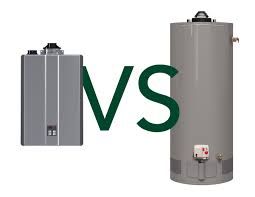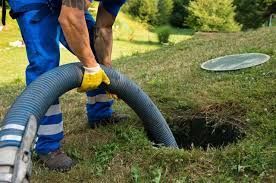How to Prevent Sediment Buildup in Your Water Heater
Having a reliable water heater is crucial for maintaining hot water in your home. However, sediment buildup can reduce efficiency, increase energy costs, and even cause damage over time. In this guide, we’ll walk you through some expert tips on how to prevent sediment buildup and keep your water heater running smoothly.
Why Is Sediment Buildup in Water Heaters a Problem?
Sediment, often composed of minerals like calcium and magnesium, accumulates at the bottom of your water heater tank over time. This can lead to:
- Reduced efficiency as the heater works harder to heat water.
- Noisy operation, with popping or rumbling sounds.
- Higher energy bills due to decreased efficiency.
- Shorter lifespan of the water heater, leading to costly replacements.
How Does Sediment Build Up in a Water Heater?
What Causes Sediment in Water Heaters?
Sediment forms when minerals in the water settle at the bottom of the tank. Homes with hard water are more susceptible to this issue because of the higher mineral content.
Hard Water: Water with high levels of minerals like calcium and magnesium leads to faster sediment buildup.
Natural Mineral Content: Even in areas without hard water, natural minerals can settle at the bottom of the tank over time.
Water Supply Contaminants: Particles, debris, and dirt in the water supply can contribute to sediment accumulation.
Water Temperature Settings: Higher water temperatures can cause minerals to solidify and settle at the bottom of the tank more quickly.
Infrequent Use of Hot Water: When water sits stagnant in the tank for long periods, sediment is more likely to accumulate
Effective Ways to Prevent Sediment Buildup in Your Water Heater
1. Regular Flushing of the Water Heater
Flushing your water heater regularly is the most effective way to prevent sediment accumulation. Here's how you can do it:
- Turn off the heater and allow the water to cool.
- Connect a garden hose to the drain valve at the bottom of the tank.
- Let the water drain until it runs clear, removing most of the sediment.
Pro Tip: Aim to flush the tank every 6-12 months to prevent excessive buildup.
2. Install a Sediment Filter
Installing a sediment filter is an excellent long-term solution, especially if you live in an area with hard water. These filters trap particles before they enter your water heater, minimizing the amount of debris that makes its way to the tank.
- Benefit: Less frequent flushing is required, and your water heater will last longer.
3. Use Water Softeners
If your home has hard water, consider installing a water softener. It helps reduce the amount of calcium and magnesium in the water, two of the primary culprits for sediment buildup.
- Benefit: Water softeners protect not only your water heater but also other household appliances.
How to Know If Your Water Heater Needs Sediment Removal
1. Strange Noises Coming from the Heater
If your water heater starts making unusual noises—like popping or banging—it’s a sign that sediment is causing overheating at the bottom of the tank.
2. Inconsistent Hot Water Supply
Sediment buildup can insulate the heating element, causing your water heater to work inefficiently. If you notice your hot water runs out faster than usual, it could be due to sediment buildup.
3. Higher Energy Bills
A sudden spike in energy consumption may indicate that your water heater is working harder to heat water due to sediment accumulation.
How Often Should You Flush Your Water Heater?
For optimal performance, flushing your water heater every 6 to 12 months is ideal. However, homes with particularly hard water may need to flush more frequently to prevent sediment buildup.
Can You Remove Sediment Buildup by Yourself?
DIY Sediment Removal Process
Removing sediment from your water heater can be a simple DIY task. Here’s a step-by-step process:
- Turn off the power or gas to the water heater.
- Allow the water to cool to avoid burns.
- Attach a garden hose to the drain valve and drain the water.
- Refill the tank and turn the power or gas back on once the water runs clear.
Safety Tip: Always be cautious when working with your water heater to avoid injury.
When to Call a Professional
If you’re not comfortable handling your water heater or the sediment buildup is severe, it’s best to call a professional plumber. They can assess the damage and recommend whether you need a flush, repair, or replacement.
The Best Time to Replace Your Water Heater
Long-Term Water Heater Maintenance Tips
1. Schedule Professional Inspections
Have your water heater inspected by a professional annually to catch potential problems early, including sediment buildup and corrosion.
2. Adjust the Temperature
Keep your water heater temperature at 120°F to reduce sediment buildup. Water that’s too hot increases mineral deposits, causing more sediment to accumulate.
3. Check the Anode Rod
The anode rod attracts corrosive elements and prevents them from damaging the tank. Check it every 2-3 years, and replace it if necessary.
Conclusion:
Preventing sediment buildup in your water heater is essential for maintaining efficiency, reducing energy costs, and extending its lifespan. By following these expert tips, including regular flushing, using water softeners, and installing sediment filters, you can ensure your water heater stays in top condition for years to come. For professional water heater services, reach out to us!
Ready to Keep Your Water Heater Running Smoothly?
Take action today with these practical steps, and enjoy hot water without the hassle!




CONTACT INFORMATION
Office:
855-266-7682
Email:
service@AllCityPlumbers.com
Address: 6694 Oak Ridge Commerce Way, Austell, GA 30168
Business Hours:
Mon - Sun 24 Hours
OUR SERVICES
© 2022 All Rights Reserved|All City Plumbers Privacy Policy | Terms & Conditions | Sitemap

